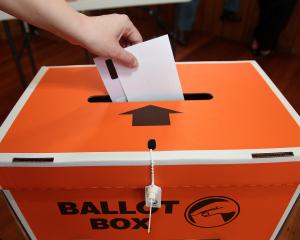
The Star reporter Sam Henderson, 140 years later, finds out how a string of defences were installed across Dunedin’s coastline to fight an enemy that never emerged.
Nineteenth-century clashes between Britain and Russia led many in New Zealand to regard Russia as a looming threat.
In the aftermath of the 1850s Crimean War, unheralded Russian warships in South Pacific waters sparked alarm across the country.
Some of these reports were clearly a hoax, such as the 1873 Daily Southern Cross report of Russian invasion by the ironclad cruiser Kaskowiski, or "cask of whisky".
But later scares prompted the government to order guns to be distributed across the colony to create a string of coastal defences.
Archivist Michael Biggs, of Feilding, created a website outlining New Zealand’s coastal defences as a teenager.

"The British Empire was quite concerned about Russia at the time expanding out into other areas."
In 1878, there was a war scare and the New Zealand government bought "a whole bunch of guns" to install across the colony.
"But then the war scare sort of died down and so rather than spend the money they quietly stored the guns away.
"But as so often with these things, in 1885, another war scare happens, so they pull out the old guns, which are now somewhat obsolete.
"So they immediately install those around pretty much Auckland, Wellington, Lyttelton and Dunedin and quickly buy more."
A series of emplacements were built in Dunedin.
Up to six gun batteries were built at Taiaroa Head between 1885 and 1905, ranging from hastily raised earthworks to a six-inch disappearing gun at the Lighthouse Battery.

The fortifications were intended chiefly to repel raiders.
"They are not trying to stop a huge invasion fleet or anything like that.
"It is about stopping cruisers from raiding the ports, shelling the city, destroying the port facilities and things like that," Mr Biggs said.
They were largely manned by volunteers who lived near the batteries.
Defences continued to be installed, adapted and upgraded until about 1906.
Taiaroa Head, Ocean Beach and Harington Point batteries were used during World War 1.
The defences were then abandoned in the 1920s and left idle.

Nothing new was built until 1941.
A battery of six-inch guns was then constructed at Rerewahine, near Taiaroa Head, and above Tomahawk Beach.
Tomahawk Battery was abandoned about 1944, while Rerewahine lasted until 1945.
How genuine those fears were is up for debate, and no shot was ever fired in anger.
"There were Russian ships that did visit New Zealand in the late 19th century, so they could certainly come here if they wanted to," Mr Biggs said.
While some defences continued to be used for training into the 1950s, eventually the defences outlived their usefulness, even as a deterrent.
"It just got to the point where, you know, if somebody can load a missile from 100 miles away, then a gun that can shoot out to 10 miles is not much use."













